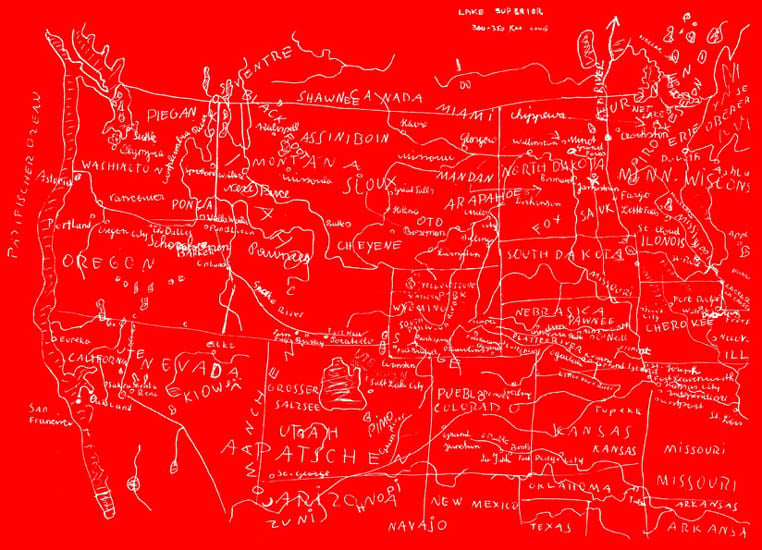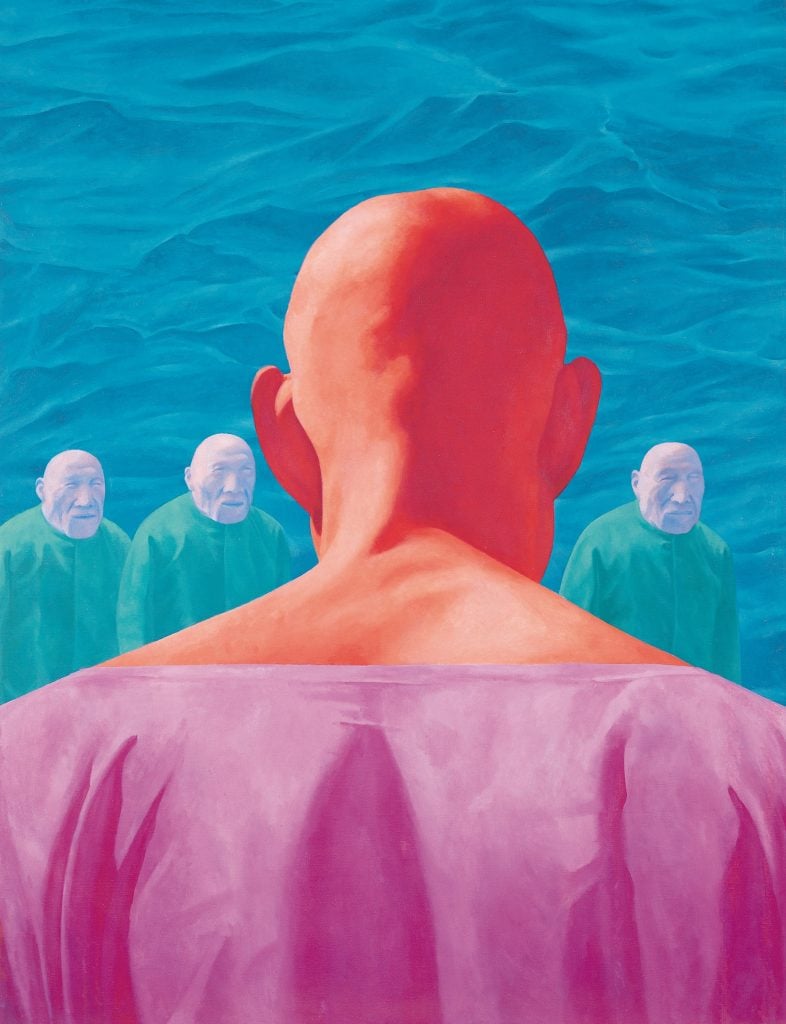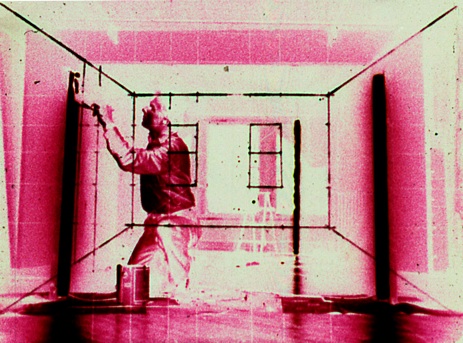New Kurdish Flag
2001 - Installation (Installation)
150 x 250 x 8 cm
Peter Friedl
Peter Friedl’s projects place aesthetic questions within an expanded field that takes into account the social, political and philosophical context. This textile piece quotes and diverts a flag with a red background and the central star of the Kurdistan National Liberation Front (ERNK, a military organization linked to PKK, founded in 1985 and disbanded in 2000), and not the national flag of Kurdistan. The artist became interested as from 1994, when the town of Lice was destroyed by the Turkish army and the PKK was expelled from Germany. This flag got a lot of visibility in the media at the time. The artist has lightened the red and emptied the central circle to question the role of the emblem as a representative sign for a group. Lightening and cutting out are ways of reclaiming all the complexities. New Kurdish Flag 01 considers the status of the flag as an object of propaganda which was activated in the streets during different performances, before being ‘museified’ and placed in a frame in 2005, in a semantic slip. The fabric acquires a political dimension. Is it still possible to reactivate it in the real world?
Many of the projects of Peter Friedl, in their heterogeneous medium and style, function as intersection points between countless lines of thought and reference, creating a vast didactic network where dialogues simultaneously merge with critical logic and narrative. Power, gender, language, history, identity, and territory mingle in the work of Friedl. His work radically shifts modernist rules of the making to methods conditioned by the social context. Thus, in the work “Playgrounds” (2004), a set of color slides of public playgrounds around the world, is thought of by the artist as “an aesthetic ethnography that examines the playground as the scene where ‘small’ subjects, children, make their first public experiments.” The images convey more information than it seems at first glance. Friedl has underlined that “commentaries, speech and any kind of information in the background remain invisible and has simply become a component of the series.” Peter Friedl was born in 1960 in Austria where he lives and works today.
Colors:
Other related works, blended automatically
» see more

© » KADIST
Peter Friedl
2005Map 1969-2005, a poster glued on the wall, questions space in its relation to geography...
Related works sharing similar palette
» see more

© » ARTS EQUATOR
Open Calls and Opportunities: March 2019 (Singapore) | ArtsEquator Thinking and Talking about Arts and Culture in Southeast Asia ArtsEquator Radar March 14, 2019 Internship at NUS Museum, May to August 2019 Applications are now open for the NUS Museum Internship Programme! Five positions are available in exhibitions, outreach and collections across the period of the university summer holidays...

© » ARTS EQUATOR
Open Call and Opportunities: June 2019 (Singapore/SEA) | ArtsEquator Thinking and Talking about Arts and Culture in Southeast Asia Articles June 17, 2019 [Updated as of 27 June 2019] Ten Years After: Call for articles on Asian cinema TEN YEARS AFTER is a special online-only edition of NANG magazine organised in memory of Alexis Tioseco and Nika Bohinc, two committed young film critics who were murdered in Manila in 2009...
Other works by: » Peter Friedl
» see more

© » KADIST
Peter Friedl
2005Map 1969-2005, a poster glued on the wall, questions space in its relation to geography...
Related artist(s) to: Peter Friedl » Harun Farocki, » Anselm Franke, » Anton Vidokle, » Berlin Biennial, » Erick Beltrán, » Hito Steyerl, » Jimmie Durham, » Kunsthalle Basel, » Lawrence Weiner
» see more

© » KADIST
Harun Farocki
2009For Immersion , Harun Farocki went to visit a research centre near Seattle specialized in the development of virtual realities and computer simulations...

© » KADIST
Anton Vidokle
2020Shot in Oliveto Lucano, a village in the south of Italy, AUTOTROFIA (meaning self-eating) by artist Anton Vidokle is a cinéma vérité style film that slides fictive characters into real situations, and vice-versa, to draw a prolonged meditation on the cycle of life, seasonal renewal, and ecological awareness...

© » KADIST
Erick Beltran
2010In his posters, prints, and installations, Erick Beltrán employs the language and tools of graphic design, linguistics, typography, and variations in alphabetical forms across cultures; he is specifically interested in how language and meaning form structures that can be misconstrued as universal...
Related works found in the same semantic group
» see more

© » KADIST
Kwan Sheung Chi
2007A Flags-Raising-Lowering Ceremony at my home’s cloths drying rack (2007) was realized in the year of the 10th anniversary of the establishment of The Hong Kong Special Administrative Region of the People’s Republic of China...

© » KADIST
Alexandre da Cunha
2010In Laissez-Faire (Rainbow Flag) da Cunha has turned a beach towel into both a painting and a flag...

© » KADIST
Collier Schorr
1999Collier Schorr’s prints upend conventions of portrait photography by challenging what it means to “document” a subject...

© » KADIST
Elsa Werth
2019In the video Color Strip by Elsa Werth two-dimensional versions of all the national flags of the world (197 in all) are compiled into a long horizontal strip...


